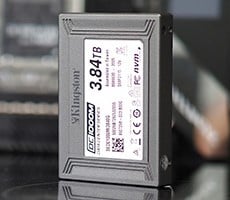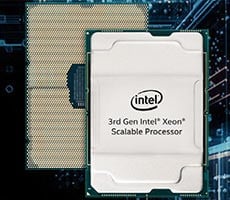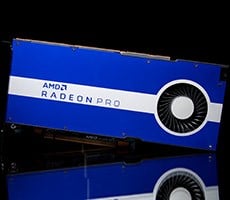There is a fledgling wireless standard that effectively renders the vast majority of home networks out of date -- don't panic though, your stuff isn't necessarily
obsolete. It is called
Wi-Fi 6, if using the simplified nomenclature that the
Wi-Fi Alliance introduced last year, or 802.11ax if you want to stick with the more technical (and potentially confusing for the average consumer) description. Either way, what we have is a bleeding-edge standard that router makers are just now starting to adopt, one that is better equipped to handle the growing number of wireless devices that are commonly found in our homes (PCs and laptops, smartphones, tablets, game consoles, smart speakers, and so forth).
It's not surprising that
Netgear is one of the first to grab hold of the Wi-Fi 6 standard with a handful of new routers targeted at consumers. Netgear is typically fast to adopt new standards, with its Nighthawk series often competing for the performance crown.
The model we are taking a look at here is the
Nighthawk AX8 (model RAX80). It is an 8-stream AX6000 router with a 64-bit quad-core 1.8GHz processor tucked inside, and plenty of speed to simultaneously handle things like 4K streaming and large file downloads. It's one of
four Wi-Fi 6 models in Netgear's stable right now, the others being the Nighthawk AX4 (RAX40) and two Nighthawk AX12 models (the RAX120 and RAX200).
All of Netgear's newest models carry premium price tags. In this case, the MSRP is $399.99 (you can find it on
Amazon for around $300, though). Living on the bleeding edge is rarely cheap --call it the Early Adopter Tax, if you will -- and here the price is indicative of both a new standard and high-performance connectivity. It could be worse, though -- Netgear's Nighthawk AX12 (RAX200), the only tri-band router of the bunch,
is priced at $599.99.
Is the AX8 worth the money? That's a loaded question that requires a closer examination of the router's features and performance, all of which we will get to. First, however, let's go over some pertinent specs...
 |
|
Netgear Nighthawk AX8 AX6000 Wi-Fi 6 (802.11ax) Router (RAX80) |
| Specifications & Features
|
|
Wi-Fi Technology
|
Wi-Fi 6 (802.11ax)
|
| Beamforming |
2.4GHz and 5GHz
|
OFDMA
|
Uplink and Downlink (improved capacity and efficiency)
|
Wi-Fi Performance
|
AX6000
|
Wi-Fi Band
|
Dual-Band Wi-Fi:
2.4GHz AX: 4x4 (Rx/Rx) 1024 QAM 40MHz, up to 1.2Gbps
5GHz AX: 4x4 (Tx/Rx) 1024 QAM 160MHz, up to 4.8Gbps
One WiFi Name with Any Router or Modem Router
Smart Roaming connects your mobile devices to the most robust WiFi signal Other Technical Features of Nighthawk X6S
One WiFi Name with Any Router or Modem Router
Smart Roaming connects your mobile devices to the most robust WiFi signal Other Technical Features of Ni
|
| Ethernet + USB Ports |
Five (5) 10/100/1000Mbps LAN
One (1) 10/100/1000Mbps WAN
Two (2) USB 3.0
|
| Key Features |
Uplink and downlink OFDMA 1024 QAM
64-bit quad-core 1.8GHz processor
160MHz channel support
Additional DFS channels for interference free experience
MU-MIMO
|
| Security |
Wi-Fi Protected Access:
--WPA2-PSK (AES)
--WPA-PSK (TKIP) + WPA2-PSK (AES)
--WPA/WPA2 Enterprise
Guest network access (2.4GHz + 5GHz):
--WPA2-PSK (AES)
--WPA-PSK (TKIP) + WPA2-PSK (AES)
|
Physical Specs
|
Unfolded Dimensions: 10.75 x 7.95 x 2.83 inches (273 x 202 x 72 mm) - Weight: 2.82lbs (1281g)
|
| Package Contents |
One (1) AX8/8-Stream AX6000 Wi-Fi Router (RAX80)
One (1) Ethernet Cable (Flat), Quick Start Guide, Power Adapter
|
| Price |
$349 MSRP ($298 current street price @ Amazon.com) |

The AX8 is a dual-band router serving up combined Wi-Fi speeds of up to 6Gbps (hence the AX6000 designation), with eight Wi-F spatial streams, four in the 2.4GHz band and four in the 5GHz band. You can't actually combine both bands for a single, super fast connection, though advertising the total speed is the common way of doing things in the router market.
One of the key features of this router is 1024-QAM (Quadrature Amplitude Modulation). This allows for denser packets with more data, though it requires support on both the router and client side of the equation, and typically works best at short distances. Nevertheless, the theoretical speeds on the AX8 are impressive at up to 1.2Gbps on the 2.4GHz band, and up to 4.8Gbps on the 5GHz band.
What Is Wi-Fi 6?
Before we go any further, let's talk a moment about Wi-Fi 6. It is a designation you will be seeing a lot more of as time goes on. That's because Wi-Fi 6 (802.11ax) is the next generation of Wi-Fi connectivity, supplanting Wi-Fi 5 (802.11ac). It's also backwards compatible, so you can purchase a Wi-Fi 6 router and use it with your existing wireless devices, you just won't be taking full advantage of its features.
Here's how the new nomenclature breaks down, which goes back two previous generations:
- Wi-Fi 6: IEEE 802.11ax
- Wi-Fi 5: IEEE 802.11ac
- Wi-Fi 4: IEEE 802.11n
Each new generation of Wi-Fi is faster than the previous version, and that is also the case with Wi-Fi 6. However, it represents more than a speed bump. Wi-Fi 6 takes a better approach to wireless connectivity in the modern era because it offers increased network capacity, and better efficiency through something called orthogonal frequency-division multiple access (OFDMA).
Before the Wi-Fi 6 standard came along, Wi-Fi channels stayed open until data transmissions were complete. It's like standing in line at the grocery store -- the clerk serves one customer at a time. MU-MIMO (multi-user, multiple-input, multiple output) expanded this concept by adding more grocery store lines, in this analogy -- instead of a single clerk ringing up customers, there could be four clerks. Still, in each of those lines, the clerk rings up one person at a time. In this analogy, OFDMA enables the clerk to multitask.
"This feature allows data transmission signals to be split into smaller signals. Your router sends these small signals directly to individual devices in your network. Because multiple devices can be served in the same transmission window, your router doesn’t have to wait for medium access for every packet. This method of communication increases network speed and efficiency," Netgear explains.
There are numerous benefits to this approach, including improved data transmission between every device in your network, less waiting for data transmissions, better latency, and even improved battery life (devices can enter a sleep state after every data transmission).
In short, Wi-Fi 6 routers have the speed, capacity, and special features to best handle households with multiple connected devices, compared to previous generation Wi-Fi standards.
So, what's the catch? Price is one, at least for now. But the bigger caveat is support. To take advantage of OFDMA and fully tap into a Wi-Fi 6 router's capabilities, your host devices need to support Wi-Fi 6 as well. Very few do at the moment. Samsung's newest generation Galaxy S10 family does, including the Galaxy S10,
Galaxy S10+, and even the Galaxy S10e. Most smartphones do not, however, and the same goes for PCs and laptops. That said, Intel recently launched its first Wi-Fi 6 adapter, and Rivet Networks has introduced a
Killer AX1650 Wi-Fi 6 module for gaming PCs (both use the same base Intel driver stack, with the Killer part adding some additional optimizations for gaming), and it is built-into Intel's upcoming
Ice Lake platform. We will start to see more Wi-Fi 6-enabled laptops and other devices as the year goes on, and into 2020.
Still, a Wi-Fi 6 router at this precise moment in time is about 'future-proofing' your network, at least to the extent that such a thing is possible. A Wi-Fi 6 router will still handle your existing devices just fine, but is also equipped for next-gen equipment. If you've decided to spend several hundred dollars on a router, there's really little reason not to buy a Wi-Fi 6 model. Whether or not you should spend several hundred dollars on a router is a different question entirely.
Now that we're up to speed on Wi-Fi 6, let's take a tour of the Nighthawk AX8...








